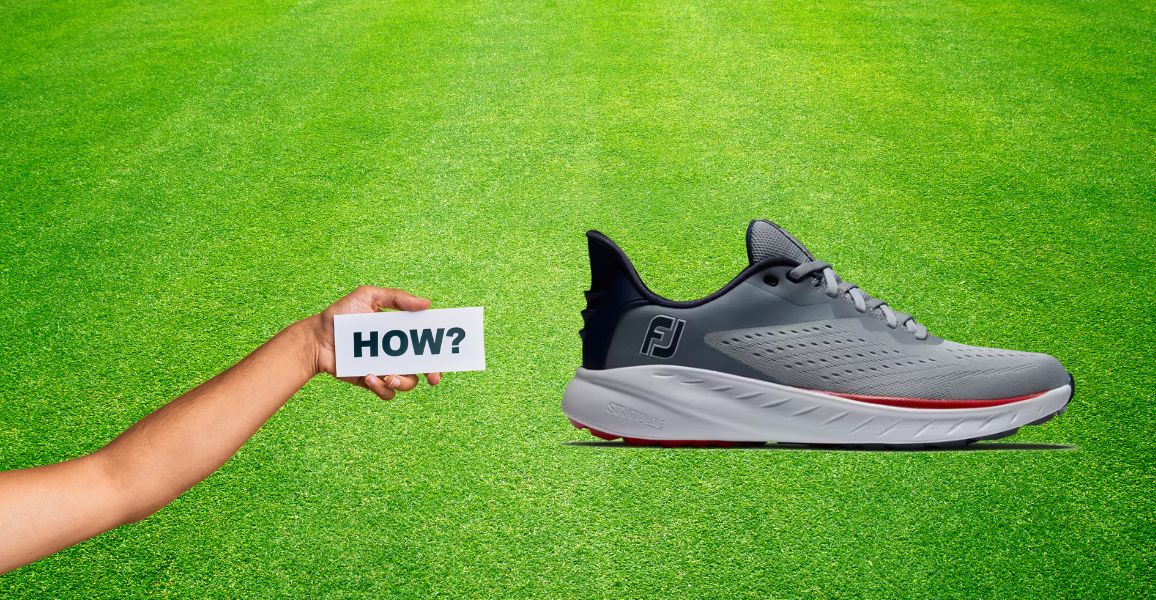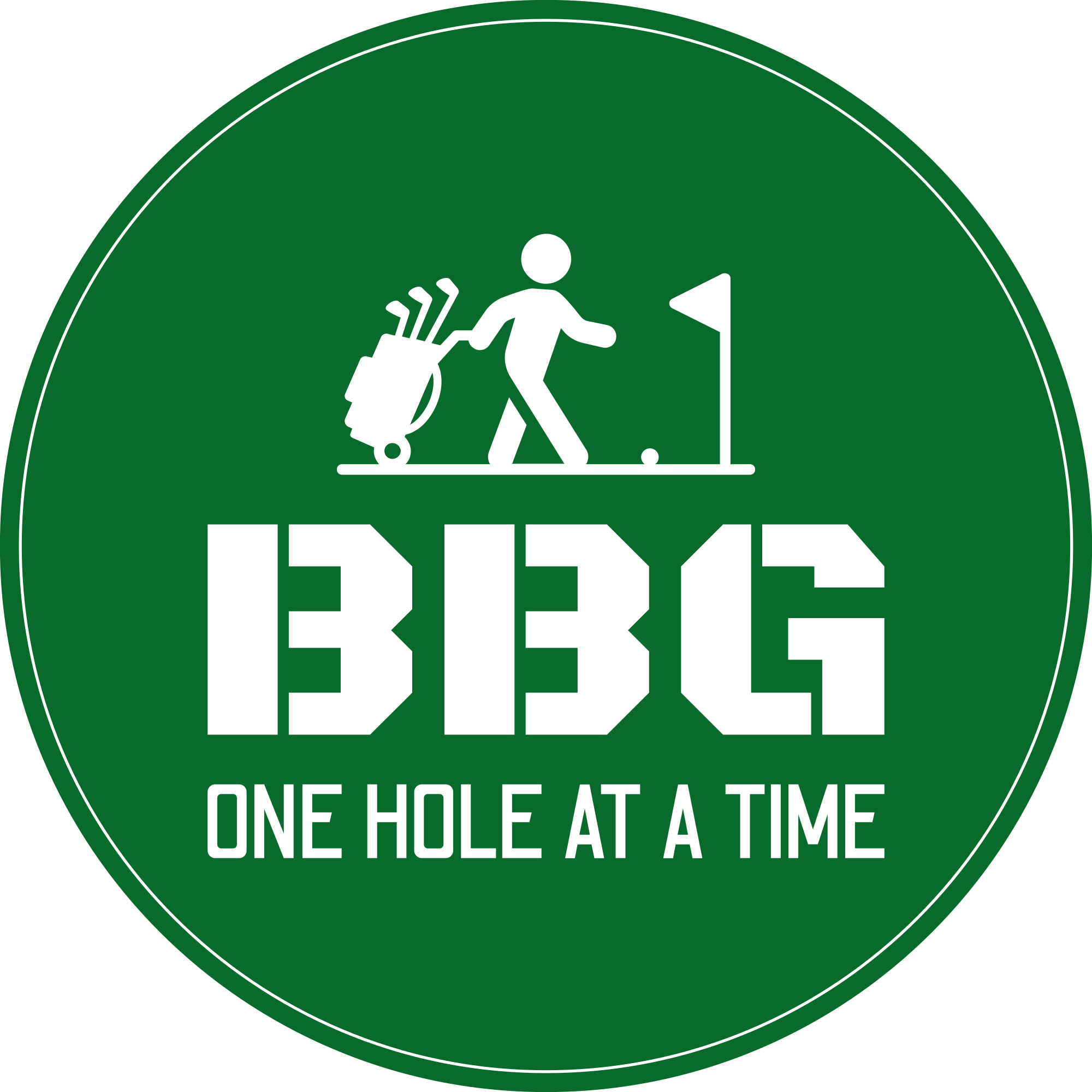Did you know about 70% of golfers wear golf shoes that are the wrong size?
Probably not, because you’ve got better things to do than finding out stats about shoes… but I don’t!
But that’s crazy to think about it, that means that between you and 9 of your golf buddies, only 3 of you are wearing the right shoe.
You may not think it makes a huge difference, but wearing the correct size can increase your swing force by 21%.
That’s huge, considering you don’t need to change anything about your swing.
Think about it: you could be hitting the ball further by buying the right pair of shoes for your next round.
How can this be? Try to picture what’s happening inside your golf shoes if they are half a size too big.
As you swing, your feet have room to move around, affecting the power transfer between your lower body and the ground.
You need to use the ground to your advantage to get maximum distance.
By having shoes that properly fit, there is no loss of power, which results in more distance… and fewer blisters on your heels after the round.
So how should they fit? You will find everything you need to consider before buying your next pair of shoes below.
So, How Should Golf Shoes Fit?

If you take anything from this post, it should be that adequately fitted golf shoes should have about ½ inch of space at the top.
This space is perfect as it will provide a snug fit but still leave room for any foot swelling throughout the round.
You might not notice it, but it’s very common, especially if you’re playing in the heat.
But that isn’t everything you need to find the perfect fit.
Ensuring you buy shoes with perfect width is just as important.
Having shoes that aren’t wide enough can lead to lots of discomfort. I personally had played with shoes that were too narrow for my feet.
While shifting my weight during my swing, I put tons of pressure on the sides of my feet, crashing them into the shoe.
I got a slightly wider pair, and all that pain/pressure I felt throughout the round disappeared.
A rough guide you can use to judge if your shoes are too wide or narrow is how far apart your lace loopholes are.
Your top lace holes should be about 1 inch apart. If they are closer than this, they are too big; any wider than this, they are too small.
Signs You’re Wearing The Wrong Size Golf Shoe
Blisters: Blisters can bring anyone to their knees. If you frequently develop them on your feet after a round of golf, it could be a sign that your shoes just don’t fit right.
Sore Spots: Everyone’s feet will be a little sore after walking 18 holes, but if you feel extra discomfort around your toes and heel, it could be a sign that your shoes don’t fit you.
Slippage: If you can feel your feet sliding or moving in your golf shoes when you swing or walk, it’s time to find better-fitting shoes.
Tightness or Pinching: Shoes that are too tight for you can lead to tightness or pinching, causing discomfort and affecting your performance.
Toenail Problems: If you can feel or see that your toenails have become bruised or damaged, it’s likely because your shoes are too tight.
Calluses: If you notice calluses forming on specific areas of your feet that are abnormal, there is something wrong with your shoe’s fit.
Foot Fatigue: When your shoes do not fit perfectly, it can cause your foot to work harder than usual to get you around.
Arch Pain: If you experience pain in your arches, it could mean that your shoes are not providing enough arch support for your foot type. If this is the case, it’s time to invest in a new pair or a pair of orthotics.
Instability: If you notice that your balance and stability during your swing feel compromised, consider trying a new pair of shoes.
Excessive Wear: If your shoes get worn out in specific places on the outsoles, it could be a sign they don’t fit well.
Getting Your Shoe Size Measured Properly
Getting yourself to measure up can be done in two ways.
Go to your local golf store and try on shoes in different sizes or widths until you find the sweet spot.
Or you could go to a shoe store and ask to be fitted, explaining what it’s for.
Either way is okay, as you could have the right size and now just need the width, but I recommend going and being fitted.
The reason for this is that although the width and length of your foot are important, the shape of your arch is equally important.
I know this because when I got fitted, I found out I had a high arch, and they recommended some shoes that would be best for me.
And when I’m telling you for the first time in my life, it felt like I was walking on clouds around the golf course, I‘m not exaggerating.
Wearing golf shoes that don’t fit your arch can result in discomfort and injuries over time.
So, finding out what particular arch support you need combined with the correct width and length can significantly increase your overall enjoyment of the game.
If you already know your arch profile and suffer from flat feet, check our review below:
Besides, you will get a pair of golf shoes to last you a year, maybe more, so getting them right the first time makes sense.
Remember to wear socks similar to those you usually play in to get the best fit.
What You Should Be Looking For In Properly Fit Golf Shoes

Comfort: This one is obvious, but a lot of times, it can go overlooked.
Getting the best-looking shoe on the shelf is sometimes tempting, but make sure it is comfortable enough to walk 18 holes in.
Yes, looking good on the golf course is essential, but nothing is worse than getting out on the back nine with sore feet just because you want to look classy.
Fortunately, today’s golf shoe industry has many options that blend comfort with style; some are even worthy of casually wearing off the golf course.
Stability: Everyone’s footwork in the golf swing is slightly different.
Since the golf swing requires a lateral motion away from the ball and through the strike, purchase shoes that provide enough support for your unique needs.
Traction: In other articles, we have discussed the pros and cons of spiked versus spikeless golf shoes.
Spiked golf shoes tend to have better traction than spikeless.
Choose the right option for your everyday needs depending on your swing style, golf course conditions, and grass type.
Checkout the below posts while you’re here:
What To Wear Golfing If You Don’t Have Golf Clothes
Do You Even Have To Wear Golf Shoes?
